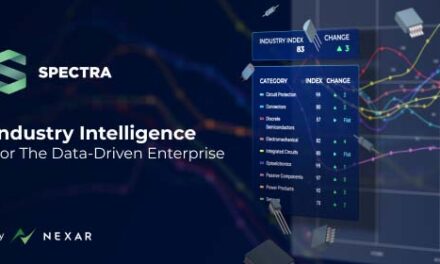Facial Recognition Technology: What Are the Benefits and Risks?
Facial recognition technology (FRT) is being integrated into society at an increasing rate, with many people viewing it as a normal part of daily life. Once a distant, futuristic concept, facial recognition technology is now found in many different technological applications with a variety of different functions. With facial recognition, people can unlock a smartphone with a glance, tag their friends in Facebook posts, or superimpose one face onto another in photos. This kind of biometric technology has revolutionized authentication, making it quick, simple, and highly accurate.
The facial recognition industry generated $3.8 billion in revenue in 2020 alone, and with facial recognition systems able to achieve up to 99.97%¹ accuracy, the potential for this technology is huge. However, despite the many benefits of facial recognition technology, it is important to understand its risks to keep your personal data secure.
What Is Facial Recognition Technology?
Each day, users of smartphones, electronic devices, and social media generate millions of images and videos. This plethora of data, combined with data from CCTV cameras, have allowed the capabilities of FRT to improve. In FRT, machine learning and AI come together to look for patterns in the facial features of images and videos and ultimately determine identity.
Facial recognition technology has multiple benefits for society. Facebook’s DeepFace software, which can recognize human faces with an accuracy rate of 97.25%, is implemented for use in crime prevention and security. FRT can also decrease the need for human interaction and thus increase efficiency during, for example, border checks in airports. FRT can even be employed in medicine, such as in identifying subtle facial traits to determine genetic disorders.
A large number of tech companies are developing facial biometric systems.
- Facebook’s DeepFace technology has a true positive rate of 97.25%.
- Google’s FaceNet was 99.63% accurate when matching 13,000 pictures of faces from across the web.
- Amazon’s Rekognition is a cloud-based facial recognition service.
- Microsoft’s Face API is another cloud-based facial recognition service.
- Gemalto’s Cogent Live Face Identification System recognizes faces in busy environments, allowing developers to create applications that match live faces with data from documents.
How Is Facial Recognition Technology Being Used?
Here are the top seven ways that FRT can improve our lives.
- Enhancing cybersecurity
- Supporting police and public safety efforts
- Streamlining airport experiences
- Improving the accuracy of medical diagnoses and treatment
- Reducing human touchpoints
- Making banking easier
- Making shopping more efficient
Facial Recognition Technology: What Are the Risks?
As facial recognition evolves, it attracts cyber criminals who aim to compromise these developing systems. In 2019, it was reported that hackers breached Apple’s iPhone FaceID user authentication in just 120 seconds. Thus, despite the many benefits of facial recognition technology, it is important to assess the risks and downsides to keep your personal data secure.
1. It can violate individual and societal privacy
The threat to individual privacy is a significant downside of facial recognition technology. People don’t like having their faces recorded and stored in a database for unknown future use.
2. It creates data vulnerabilities
Databases storing facial recognition data have the potential to be breached. Hackers have broken into databases containing facial scans collected and used by banks, police departments, and defense firms.
3. It provides opportunities for fraud and other crimes
Lawbreakers can use facial recognition technology to perpetrate crimes against innocent victims. They can collect individuals’ personal information, including imagery and video collected from facial scans and stored in databases, to commit identity fraud. With this information, a thief could open credit cards or bank accounts in the victim’s name or even build a criminal record using the victim’s identity.
4. Technology is imperfect
Facial recognition isn’t perfect. For example, it’s less effective at identifying women and people of color than white males. The technology depends upon algorithms to make facial matches. Those algorithms are more robust for white men than women and people of color because the databases contain more data on white men. This creates unintentional biases in the algorithms.
5. Technology can be fooled
Other factors can affect the technology’s ability to recognize people’s faces, including camera angles, lighting levels, and image or video quality. People wearing disguises or slightly changing their appearance can throw off facial recognition technology, too.
Ping Identity comments on the risks of FRT and what can be done to enhance levels of security as the technology continues to expand:
Although there are many positive outcomes arising from the use of FRT, there are a variety of security concerns linked to its use. From tracking individuals who have not given consent and the invasion of privacy to hackers finding ways to infiltrate the newly arising software, users and developers alike must take caution when considering the technology.
Hackers can easily gain access to systems and networks with underdeveloped passwords, including information such as your date of birth, full name, or easily guessable phrases. This issue is mirrored when it comes to biometrics, resulting in personal genetic data being retrieved. Businesses should consider biometric technology such as FRT to be used in unison with other security elements like passwords and MFA.
This will allow for enhanced security, with systems that must verify multiple components rather than an isolated method, minimizing the risk of attacks. Fingerprint and voice recognition security has become easier to hack by cybercriminals, and although FRT has proven to be more difficult to infiltrate, hackers are already looking for ways to replicate people’s faces.”












